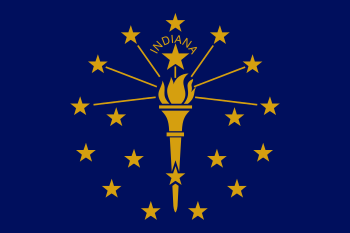James A. Hemenway
| James Alexander Hemenway | |
|---|---|
 | |
| United States Senator from Indiana | |
|
In office March 4, 1905 – March 3, 1909 | |
| Preceded by | Charles W. Fairbanks |
| Succeeded by | Benjamin F. Shively |
| Member of the U.S. House of Representatives from Indiana's 1st district | |
|
In office March 4, 1895 – March 3, 1905 | |
| Preceded by | Arthur H. Taylor |
| Succeeded by | John H. Foster |
| Personal details | |
| Born |
March 8, 1860 Boonville, Indiana |
| Died |
February 10, 1923 (aged 62) Miami, Florida |
| Political party | Republican |
James Alexander Hemenway (March 8, 1860 – February 10, 1923) was a United States Representative and Senator from Indiana. Born in Boonville, Indiana, he attended the common schools, studied law, and was admitted to the bar, commencing practice in Boonville in 1885. He was prosecuting attorney for the second judicial circuit of Indiana from 1886 to 1890 and was elected as a Republican to the Fifty-fourth and to the five succeeding Congresses and served from March 4, 1895, until his resignation, effective March 3, 1905, at the close of the Fifty-eighth Congress, having been elected Senator. While in the House of Representatives, he was chairman of the Committee on Appropriations (Fifty-eighth Congress).
Hemenway was elected to the U.S. Senate to fill the vacancy caused by the resignation of Charles W. Fairbanks and served from March 4, 1905, to March 3, 1909; he was an unsuccessful candidate for reelection. While in the Senate he was chairman of the Committee on University of the United States (Fifty-ninth and Sixtieth Congresses). He resumed the practice of law in Boonville and died in Miami, Florida; interment was in Maple Grove Cemetery, Boonville.
Notes
- United States Congress. "James A. Hemenway (id: H000467)". Biographical Directory of the United States Congress.
External links
| United States House of Representatives | ||
|---|---|---|
| Preceded by Arthur H. Taylor |
Member of the U.S. House of Representatives from Indiana's 1st congressional district 1895–1905 |
Succeeded by John H. Foster |
| United States Senate | ||
| Preceded by Charles W. Fairbanks |
U.S. Senator (Class 3) from Indiana 1905–1909 Served alongside: Albert J. Beveridge |
Succeeded by Benjamin F. Shively |



